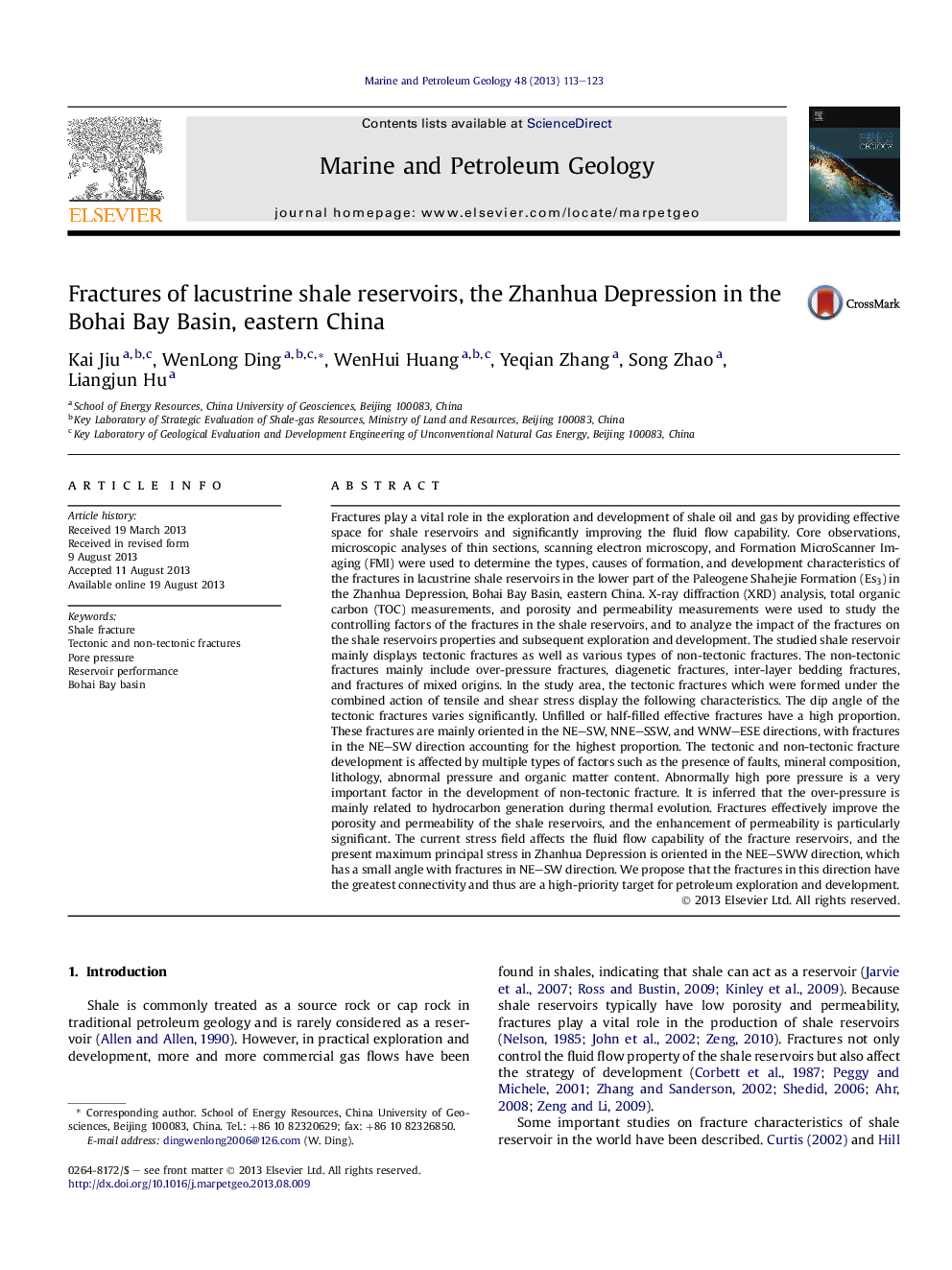| Article ID | Journal | Published Year | Pages | File Type |
|---|---|---|---|---|
| 4695823 | Marine and Petroleum Geology | 2013 | 11 Pages |
•Tectonic and non-tectonic fractures of lacustrine shale in the Zhanhua depression.•Dominating controls on fracture formation in the shale.•The impact of fractures on physical property of shale reservoirs.•The impact of fractures on the deployment well networks.
Fractures play a vital role in the exploration and development of shale oil and gas by providing effective space for shale reservoirs and significantly improving the fluid flow capability. Core observations, microscopic analyses of thin sections, scanning electron microscopy, and Formation MicroScanner Imaging (FMI) were used to determine the types, causes of formation, and development characteristics of the fractures in lacustrine shale reservoirs in the lower part of the Paleogene Shahejie Formation (Es3) in the Zhanhua Depression, Bohai Bay Basin, eastern China. X-ray diffraction (XRD) analysis, total organic carbon (TOC) measurements, and porosity and permeability measurements were used to study the controlling factors of the fractures in the shale reservoirs, and to analyze the impact of the fractures on the shale reservoirs properties and subsequent exploration and development. The studied shale reservoir mainly displays tectonic fractures as well as various types of non-tectonic fractures. The non-tectonic fractures mainly include over-pressure fractures, diagenetic fractures, inter-layer bedding fractures, and fractures of mixed origins. In the study area, the tectonic fractures which were formed under the combined action of tensile and shear stress display the following characteristics. The dip angle of the tectonic fractures varies significantly. Unfilled or half-filled effective fractures have a high proportion. These fractures are mainly oriented in the NE–SW, NNE–SSW, and WNW–ESE directions, with fractures in the NE–SW direction accounting for the highest proportion. The tectonic and non-tectonic fracture development is affected by multiple types of factors such as the presence of faults, mineral composition, lithology, abnormal pressure and organic matter content. Abnormally high pore pressure is a very important factor in the development of non-tectonic fracture. It is inferred that the over-pressure is mainly related to hydrocarbon generation during thermal evolution. Fractures effectively improve the porosity and permeability of the shale reservoirs, and the enhancement of permeability is particularly significant. The current stress field affects the fluid flow capability of the fracture reservoirs, and the present maximum principal stress in Zhanhua Depression is oriented in the NEE–SWW direction, which has a small angle with fractures in NE–SW direction. We propose that the fractures in this direction have the greatest connectivity and thus are a high-priority target for petroleum exploration and development.
